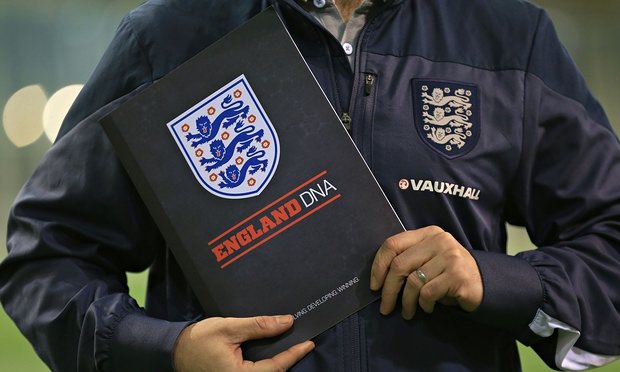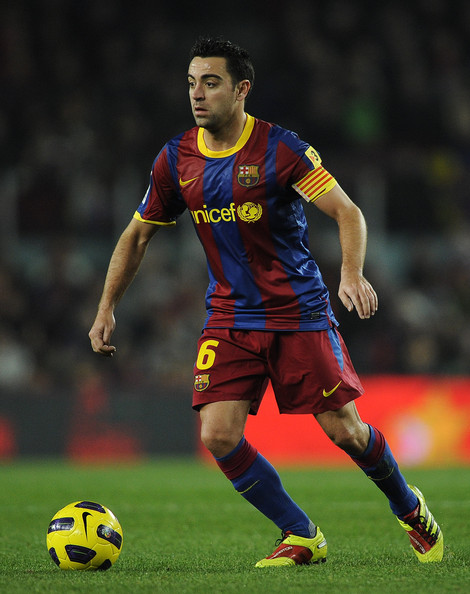The FA launched its ‘England DNA’ project in 2014. The DNA is the framework or blueprint to help bring success to future players and teams who represent England at international level. From U16 all the way through to the senior side, the DNA project is designed to create a clear pathway, philosophy and identity. The framework consists of five elements:
- Who we are – Pride, understanding and heritage to representing England
- How we play – Playing style in and out of possession
- The future England player – Developing players technically and tactically
- How we coach – Consistent approaches to delivery, planning and review of the sessions
- How we support – Presenting players with the latest resources in the world of analysis, sports medicine, nutrition and psychology
We can all project our opinions on the above. Points 1, 4 and 5 can be raised in future debates. As a technical football coach with a good understanding of modern tactical trends, I would like to presents my thoughts on English style of play during the brief outing at Euro 2016.

Stats
- If Euro 2016 was a league table, after 4 games England would be in 11th place with 1 win, 2 draws and 1 loss = 5 points
- England attempted 2001 passes, 1768 were successful = 88% (the 4th best in the tournament)
- England average possession statistic is 59% which is the 3rd best in the tournament behind Germany and Spain
- England recorded 83 attempts on goal (1 less than leaders Germany). 36 off target, 20 on target, 27 blocked
- 4.81% conversion rate
- 33 corners (8.25 per game)
- Knocked out – Last 16 vs Iceland 2-1
The possession stats and attempts on goal make for impressive reading. The facts are England are out, full credit to Iceland, the better TEAM on the evening.
Technique
This part of the blog will analyse the player’s ability in possession as individuals and as a collective unit. When we think of technically proficient footballers, we automatically think of players such a Xavi, Iniesta, Messi and former players like Scholes, Gascoigne etc. Players who can handle the ball courageously in tight situations, players who looked like they have acres of space and time to manipulate the ball and the opposition with a range of different actions. Technically this England squad is actually at a very high level. Stones, Dier, Barkley, Wilshire, Lallana and Sturridge spring to mind. All the players above are easy on the eye, can show good composure in tight spaces and in the spur of the moment can produce a piece of magic. In my opinion, the issue is that we don’t have enough of these players. Germany, Spain, Portugal all have more technically proficient players. This results in FAST progressive possession in which players can play through the lines with clear passes, passes to the correct foot at the correct speed. The top top players manipulate the ball well, hide the ball effectively in the final third of the pitch, play off the front foot and combine well with each other with multiple touches. The best players who operate in world football also receiver the ball extremely well, a good first touch buys time and space for further actions. Exceptional players turn and face opponents in and around the penalty area, this encourages 1v1 play and link opportunities with closely connected players. All of the techniques above involve the ball and a lot of the English squad have many of these traits, but for me, technique can also relate to what you do off the ball and this is where we potentially come unstuck and it is a view of mine that England would be more successful on the global scale if they addressed this area of producing players who can be batter and more proficient at scanning and making movements off the ball.

Scanning without the ball
What is it? Scanning involves a player being aware of their surroundings at all times. Players scan space, teammates movements/positioning and opposition player’s distances and movements in comparison to where the ball is. The more an individual player scans, the more knowledge they intake. So when the ball does arrive, the knowledge could result in a faster, better action which could eliminate a defender or release a teammate in a better position more quickly. The danger of not scanning is a potential loss in possession, a decrease in attacking momentum, more touches which could result in an opposing players recovering behind the ball in numbers.
Watching England, it was apparent to me that a lot of their scanning was done in the first third of the pitch. Defenders would check to assess if they could receive the ball on the half turn and play into midfield, the defensive midfielders would check to see if they could face forward and receive the ball on the back foot. This happened regularly, but as a former player myself, this is expected. To check and scan when there is no pressure on the ball is relatively easy. The concern for me is as the ball progressed back to front and through the lines into the middle and final third, the scanning decreased more and more. The result of this was either a loss of possession or most common, a sideways/backwards pass. I’m knowledgeable enough to know that sometimes you have to recycle the ball, BUT… If scanning is performed to its optimal level, players see pitches quicker, therefore the ability to play off 1 touch in a forward’s direction would improve and could be the difference between beating the block at speed.
The faster the ball moves, the faster the opposition have to move and think. The best nations are probing more often, moving the opposition at a greater speed. The players are seeing outcomes before they occur. England worked the ball into the final third very well but when the space became condensed the individuals who should have been aware of their surroundings weren’t thinking or acting fast enough to make a difference in the area of the pitch that matters the most. The source of quick, decisive, combination play is SCANNING and for England to improve on this is not a short term fix. The work done with the U16-U21 English sides need to be focuses in this area with relentless repetition and understanding. Once the scanning side is mastered by individuals, we will then start to see faster, progressive football with an end product.
I now want to analyse England’s movement off the ball while in possession. How many times did we see Cahill or Smalling make a forward movement to receive the ball in Midfield – ZERO. Both were very happy to play with the game in front of them and not take the risk. Would John Stones make the movement – FOR SURE. England’s full backs who I thought represented us very well in the tournament, were the only players in my opinion that were effective off the ball. All 4 fullbacks, Walker, Clyne, Rose and Bertrand provided width and looked to run in behind when in advanced positions. My only concern was that on many occasions they arrived too early, which forces them to receive the ball when still. A prime example of a full back arriving late in the modern era is Dani Alves at Barcelona. Waiting for the correct trigger (central midfielder opening up) he would relentlessly make a movement from ‘out to in’ and receive the ball behind the back line. This ‘out to in’ movement was very rare during the 4 games England played, all 4 fullbacks were happy to receive the ball on the outside of the oppositions full back which presents a tougher more predictable cross rather than an ‘out to in movement’ which would result in a shot on goal.









